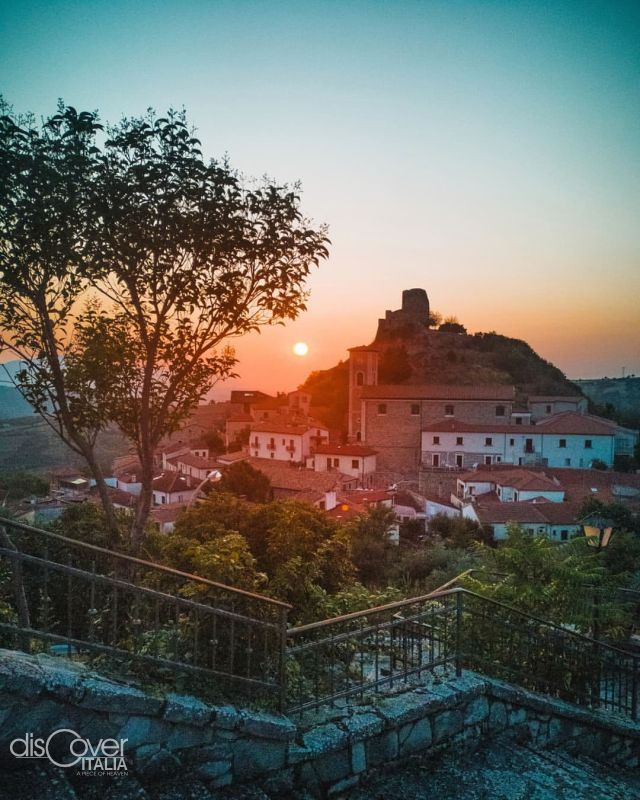The stone tower mutilated by time, still seems to guard, protective, over the hamlet that runs all around the sides of the hill ruling over the Ansanto valley.

Upper Irpinia, the hamlet is made up of low houses, entirely of local stone, with characteristic embellishments, arranged along narrow alleys with arches and picturesque views. The meeting and reference point for the small resident community is the square, also named after St. Felice, where a large lime tree stands out, a green monument planted in 1799, son of the Neapolitan Revolution. Facing the sea is the loggia of stone arches of Palace Antonellis-Villani, one of the many noble palaces within the town, and a monumental fountain. Nearby is also the Civic Museum, dedicated to Don Nicola Gambino, with recently discovered archaeological findings.
A series of stairways bordered by stone walls called “re muredde” is our way to get to the top of hill. They lead to the mother church of Santa Maria Maggiore. Built in the 11th century and equipped with a high bell tower, it was destroyed by the earthquake of 1980. It was then completely rebuilt and reopened to the faithful in 1991. It houses a valuable wooden crucifix from the 18th century and statues, also in wood, of the patron St. Felice, of the Madonna of Constantinople, of St. Giuseppe, St. Vito, St. Vincenzo and St. Francesco di Paola.
The climb continues up to what remains of the castle: the main tower and the remains of the watchtowers and of a cistern, one of the access doors. Mentioned for the first time in a document of 1150 as a possession of Ruggiero di Castelvetere, in 1236, in the middle of the Norman era, the son of Emperor Frederick was imprisoned there. From 1440 the Saracenos and Caracciolos families were lords, then followed by the Reale family. Giovan Battista at the end of the 16th century obtained the title of baron of Rocca San Felice. Other families followed until the subversion of feudalism in 1806.
The hamlet also houses a Chapel di Maria Santissima di Costantinopoli, that houses a valuable painting from the early 17th century depicting the Madonna nursing the Child with a city on fire under the feet of the Virgin. Even older is the Sanctuary of St. Felicita. It was built in the 4th century by St. Felice di Nola in the place where the pagan cult of Mefite was practiced, connected to the lake of the Ansanto valley. The original sacred building was destroyed by the earthquakes of 1688 and 1694 and rebuilt for the first time at the end of the 17th century and then again in 1928, due to the damage suffered during the First World War.
Ph: Fabio Lettieri



Comments powered by CComment